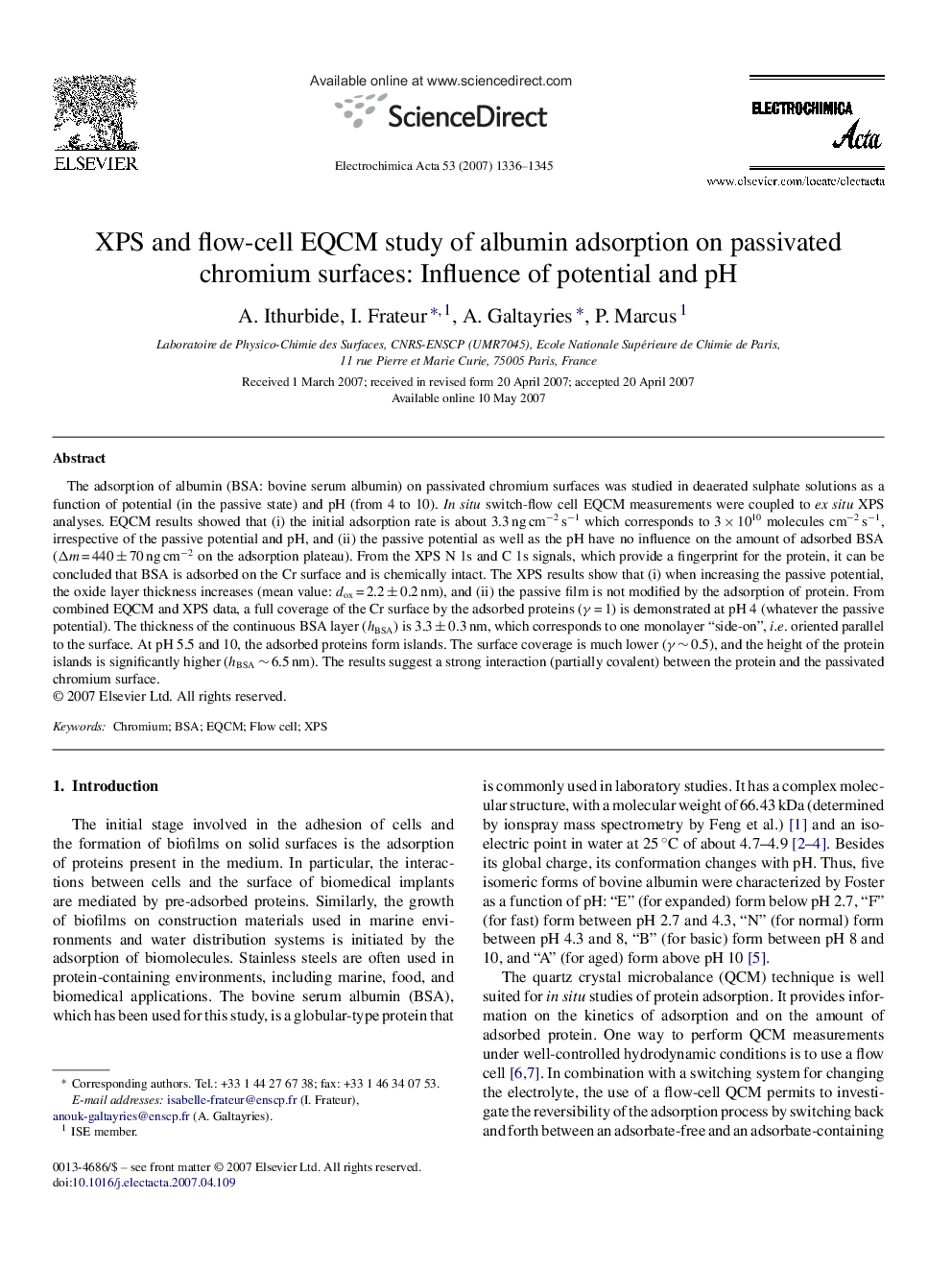| Article ID | Journal | Published Year | Pages | File Type |
|---|---|---|---|---|
| 195244 | Electrochimica Acta | 2007 | 10 Pages |
The adsorption of albumin (BSA: bovine serum albumin) on passivated chromium surfaces was studied in deaerated sulphate solutions as a function of potential (in the passive state) and pH (from 4 to 10). In situ switch-flow cell EQCM measurements were coupled to ex situ XPS analyses. EQCM results showed that (i) the initial adsorption rate is about 3.3 ng cm−2 s−1 which corresponds to 3 × 1010 molecules cm−2 s−1, irrespective of the passive potential and pH, and (ii) the passive potential as well as the pH have no influence on the amount of adsorbed BSA (Δm = 440 ± 70 ng cm−2 on the adsorption plateau). From the XPS N 1s and C 1s signals, which provide a fingerprint for the protein, it can be concluded that BSA is adsorbed on the Cr surface and is chemically intact. The XPS results show that (i) when increasing the passive potential, the oxide layer thickness increases (mean value: dox = 2.2 ± 0.2 nm), and (ii) the passive film is not modified by the adsorption of protein. From combined EQCM and XPS data, a full coverage of the Cr surface by the adsorbed proteins (γ = 1) is demonstrated at pH 4 (whatever the passive potential). The thickness of the continuous BSA layer (hBSA) is 3.3 ± 0.3 nm, which corresponds to one monolayer “side-on”, i.e. oriented parallel to the surface. At pH 5.5 and 10, the adsorbed proteins form islands. The surface coverage is much lower (γ ∼ 0.5), and the height of the protein islands is significantly higher (hBSA ∼ 6.5 nm). The results suggest a strong interaction (partially covalent) between the protein and the passivated chromium surface.
